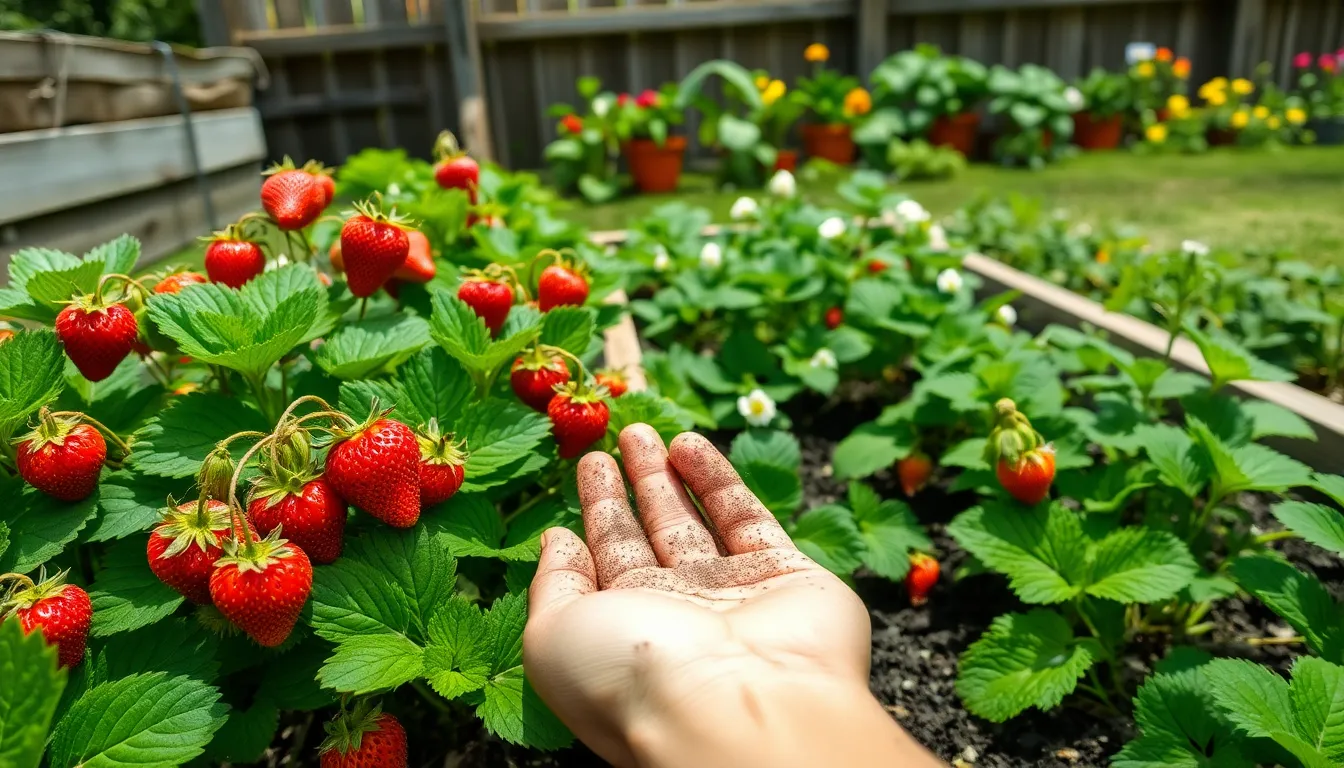Imagine stepping into your backyard or onto your balcony and picking fresh, sun-kissed strawberries right from the plant. Growing strawberries at home is not just a delightful hobby; it’s a rewarding endeavor that brings a burst of flavor and a sense of accomplishment with every harvest. Whether you’re a seasoned gardener seeking to expand your repertoire or a beginner eager to taste the fruits of your labor, strawberries offer a perfect blend of simplicity and satisfaction. The joy of nurturing these vibrant red jewels is matched only by the delight of savoring their sweet, juicy goodness.
Strawberries are a versatile crop that can be cultivated in various spaces, from sprawling gardens to compact containers, making them accessible to gardeners of all levels. Within this article, you’ll discover the myriad benefits of growing strawberries at home—from enhancing your garden’s aesthetics and attracting pollinators to reaping nutritional rewards and reducing your carbon footprint. We will guide you through the process, offering insights into the best varieties for home growth, tips for maximizing your yield, and ways to troubleshoot common challenges. By the end of your journey with us, you’ll be equipped with the knowledge and inspiration to transform your green space, however small, into a strawberry haven.
Fresh Flavor at Your Fingertips
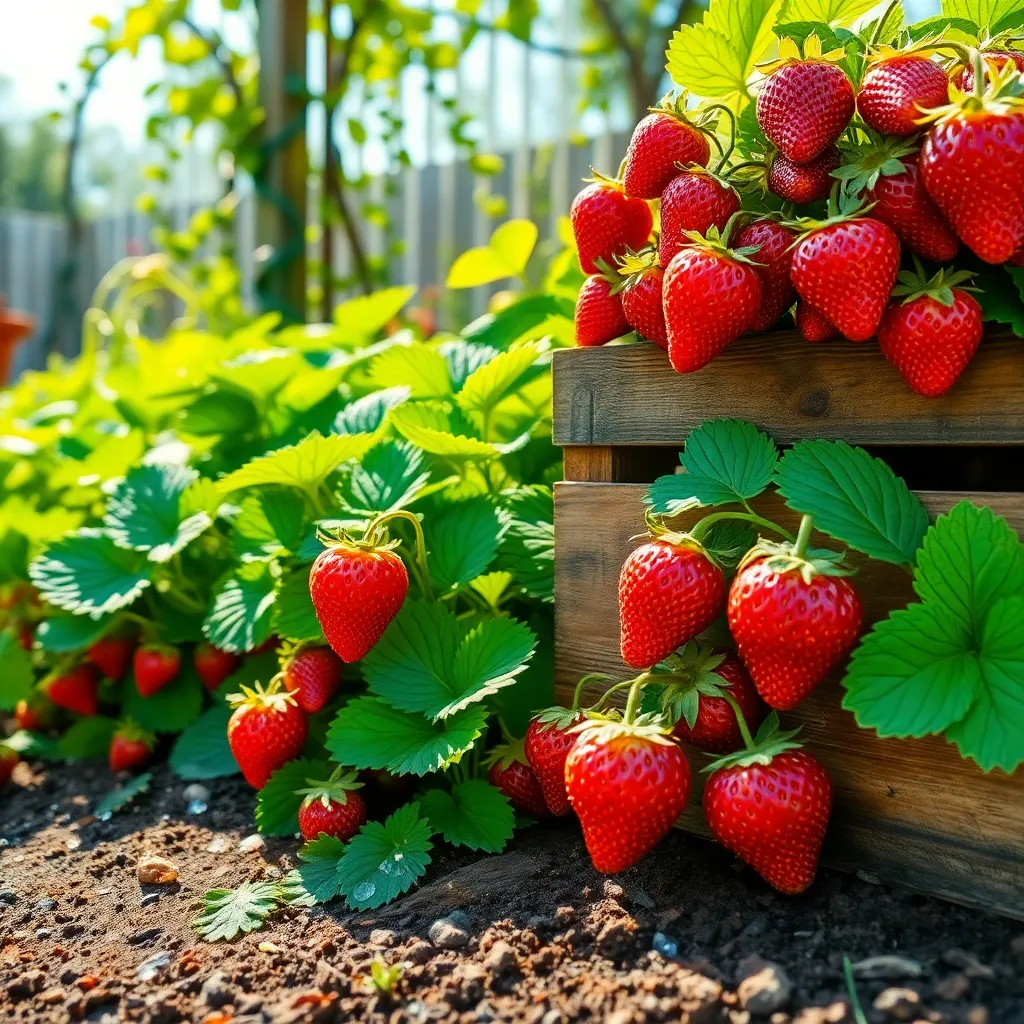
Growing strawberries at home offers a delightful way to enjoy fresh flavors right from your garden. With the right conditions, you can harvest juicy, sweet berries that are far superior to store-bought varieties.
To start, choose a sunny spot in your garden, as strawberries thrive in full sun with at least six hours of direct sunlight daily. Ensure the soil is well-drained, ideally a sandy loam enriched with organic matter like compost for optimal growth.
Watering is crucial for strawberry plants, especially during flowering and fruiting stages. Aim to keep the soil consistently moist but not waterlogged, usually requiring about an inch of water per week, adjusting for rainfall.
For beginners, consider planting everbearing varieties, which produce fruit throughout the growing season, providing a continuous harvest. Advanced gardeners might experiment with June-bearing types for a larger, single harvest, perfect for making jams and preserves.
Strawberries are relatively low-maintenance, but they do benefit from mulching to retain moisture and suppress weeds. Use straw or pine needles as mulch to protect the fruit from soil contact, keeping them clean and reducing the risk of rot.
With proper care, strawberries can be a rewarding addition to your garden, offering delicious produce and the satisfaction of growing your own food. Regularly check for pests and diseases, such as slugs and gray mold, and take action immediately to ensure a healthy crop.
Cost-Effective Berry Harvest

Growing strawberries at home can significantly reduce costs compared to buying them from the store. With an initial investment in quality plants and soil, you can enjoy a plentiful harvest for years to come.
To ensure a cost-effective berry harvest, choose the right variety of strawberries for your region and climate. Varieties like ‘June-bearing’ or ‘Everbearing’ provide a steady supply and adapt well to many conditions.
Begin by planting strawberries in a sunny location with well-drained soil, as they thrive in environments that receive at least six hours of sunlight daily. For optimal growth, consider using a sandy-loam soil enriched with organic matter to enhance drainage and nutrient availability.
Watering is crucial for strawberries, requiring about one to two inches per week, especially during dry spells. Implementing a mulching technique with straw or pine needles can help retain moisture and suppress weeds, ultimately reducing maintenance costs.
For those ready to take it to the next level, consider propagating strawberries by rooting runners, which can expand your crop without additional expenses. This method ensures a continuous supply of plants, allowing you to maximize your yield season after season.
Nutritional Boost from Homegrown
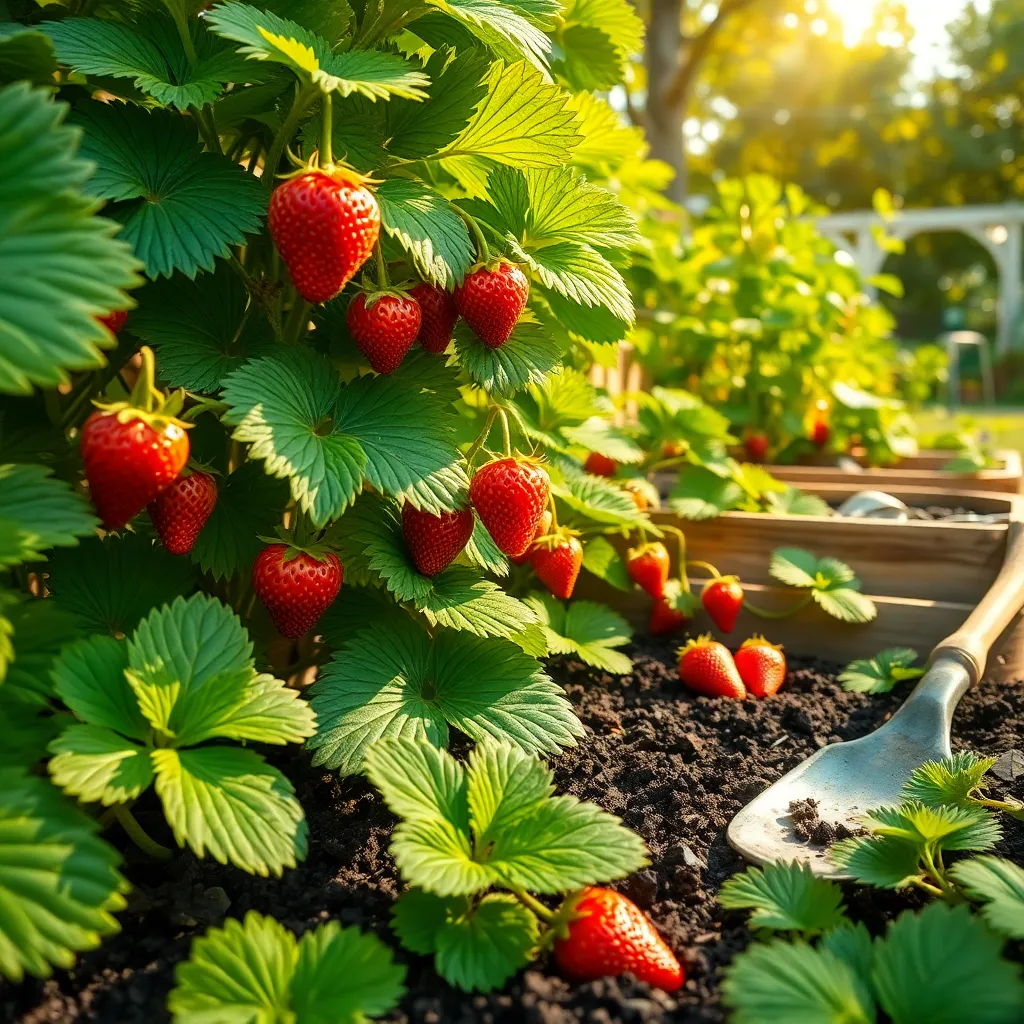
Growing strawberries at home offers a delightful way to enhance your diet with fresh, nutrient-rich berries. Homegrown strawberries are often richer in flavor and nutrients compared to store-bought options, as they can be picked at peak ripeness.
For optimal growth, plant strawberries in well-drained soil with a pH between 5.5 and 6.8. Ensure they receive at least six to eight hours of sunlight daily to maximize their nutritional content.
Regular watering is crucial, but be careful to avoid waterlogged conditions that could lead to root rot. Aim to maintain consistent moisture by watering when the top inch of soil feels dry, especially during fruit development.
Mulching with straw or pine needles helps retain soil moisture and suppress weeds, which can compete for nutrients. Advanced gardeners might consider using organic compost to further enrich the soil, providing a steady supply of nutrients throughout the growing season.
Eco-Friendly Gardening Practices
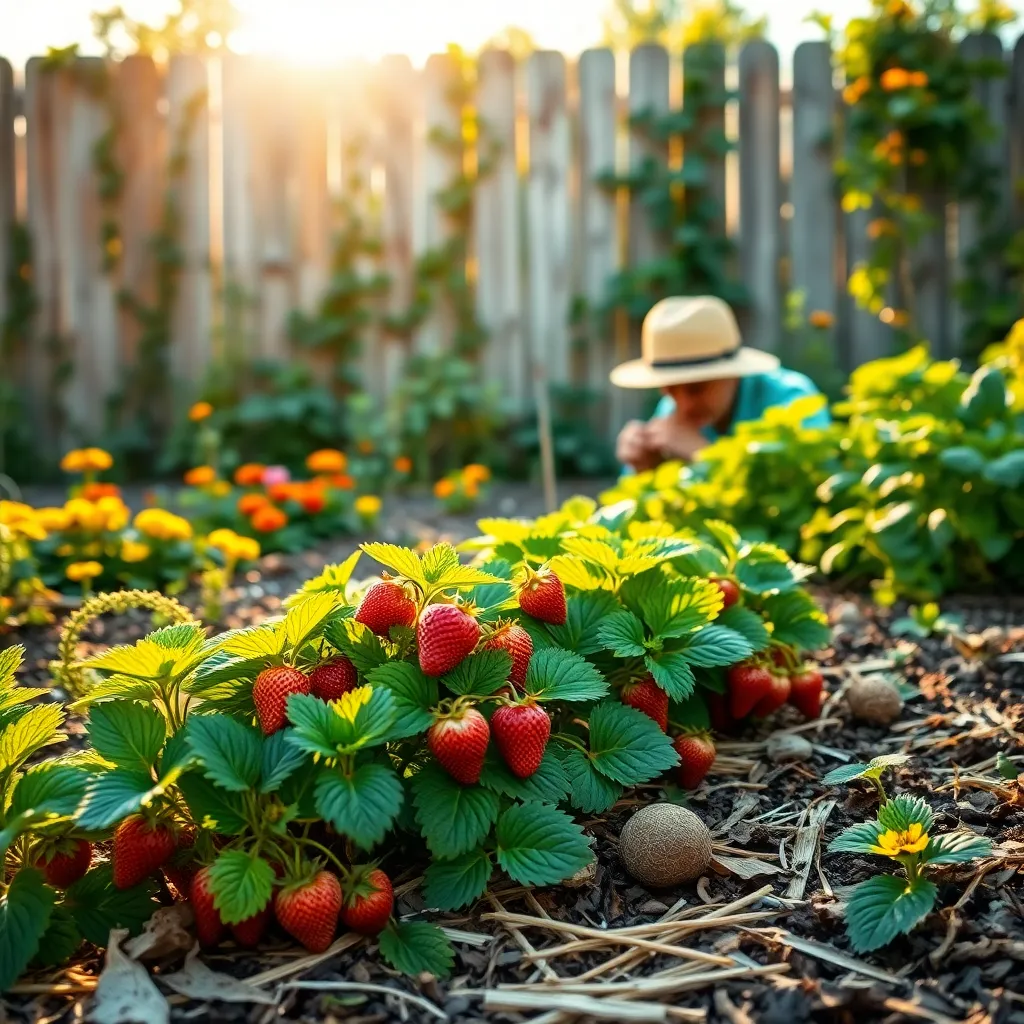
Embracing eco-friendly gardening practices is both rewarding and sustainable for growing strawberries at home. Using organic compost improves soil health and reduces the need for chemical fertilizers, which can harm beneficial organisms in your garden.
Consider implementing a rainwater collection system to water your strawberries. This not only conserves water but also provides your plants with untreated water that is free from chlorine and other chemicals found in tap water.
Mulching with natural materials like straw or wood chips can help retain soil moisture and suppress weed growth. This practice reduces the need for frequent watering and minimizes competition from weeds, allowing your strawberries to thrive.
For pest management, consider using companion planting techniques. Planting garlic or marigolds near your strawberries can naturally deter common pests without resorting to harmful pesticides.
If you have the space, rotating your crops each year is another effective strategy. This prevents soil depletion and reduces the risk of disease build-up, ensuring your strawberry plants have the best growing conditions possible.
Year-Round Strawberry Enjoyment
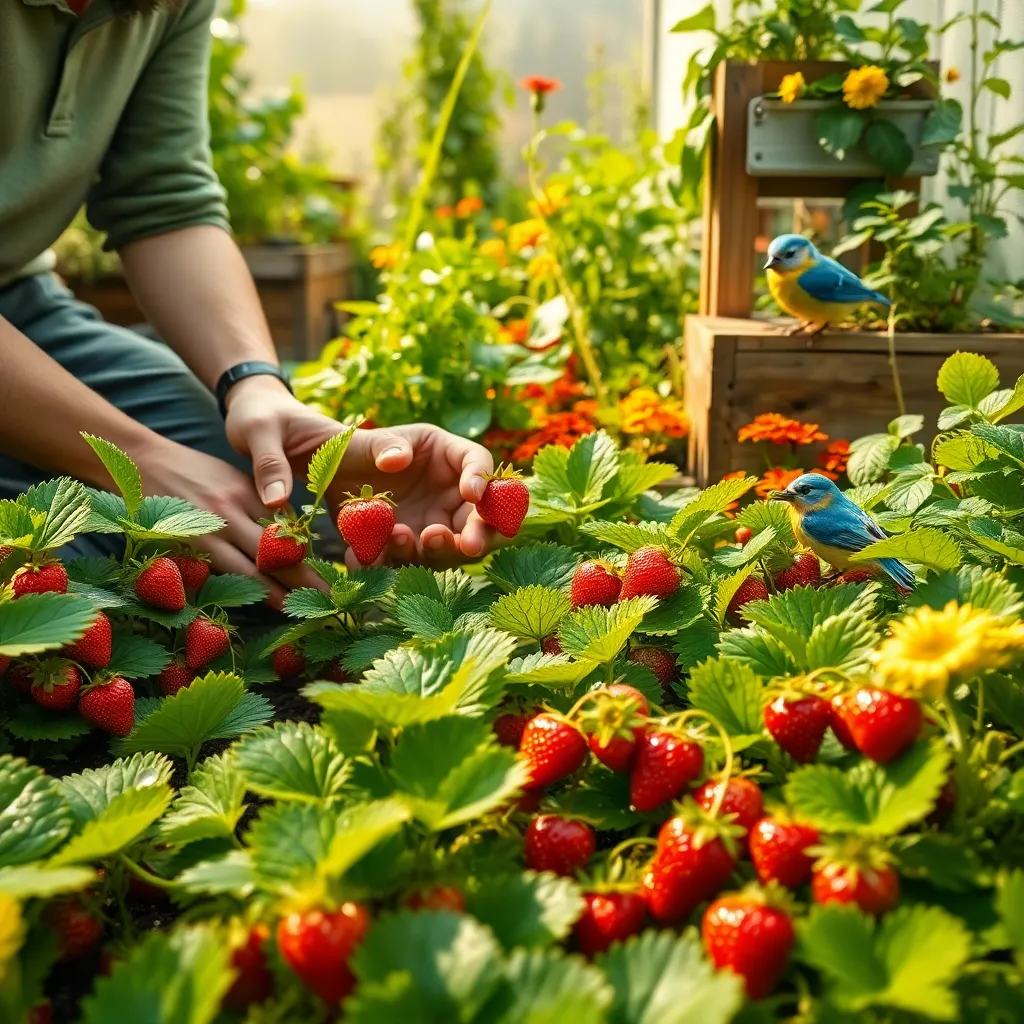
To enjoy strawberries year-round, consider growing them indoors during the colder months. Utilize a sunny windowsill or invest in a small grow light to provide the necessary 8-10 hours of light daily.
Choose everbearing strawberry varieties, as they produce multiple harvests throughout the year. These varieties require well-draining soil rich in organic matter, such as a mix of peat and perlite.
Water your strawberries regularly, keeping the soil consistently moist but not waterlogged. A good rule of thumb is to water when the top inch of soil feels dry, ensuring optimal growth and fruit production.
For advanced gardeners, consider hydroponic systems to cultivate strawberries indoors more efficiently. This method can yield abundant fruit and requires regular monitoring of nutrient levels and pH balance for best results.
Regularly check for pests such as spider mites, which can be managed with organic solutions like neem oil. Pruning runners helps concentrate the plant’s energy on producing fruit, leading to healthier, tastier strawberries.
Conclusion: Growing Success with These Plants
In nurturing the delightful bond of cultivating strawberries at home, we’ve explored five essential relationship concepts: the joy of shared activities, the importance of patience and growth, the delight in celebrating small victories, the strength in overcoming challenges together, and the nurturing of a deeper connection through shared goals. These principles not only enhance your gardening journey but also enrich your personal relationships, creating a foundation for deeper understanding and stronger bonds.
As an immediate step, consider starting a small strawberry project with a loved one. This shared endeavor can be a rewarding way to apply these principles in a tangible and enjoyable manner. Whether it’s planting the first seed or harvesting your first batch, each step is a chance to strengthen your connection.
Remember, relationships, much like gardens, thrive with care and attention. Bookmark this article as a handy guide to revisit these insights whenever you need a little inspiration. As you embark on this journey, envision a future where your relationships, just like your strawberry plants, bear the sweetest fruits of success. Together, let’s cultivate love and understanding, one strawberry at a time.

